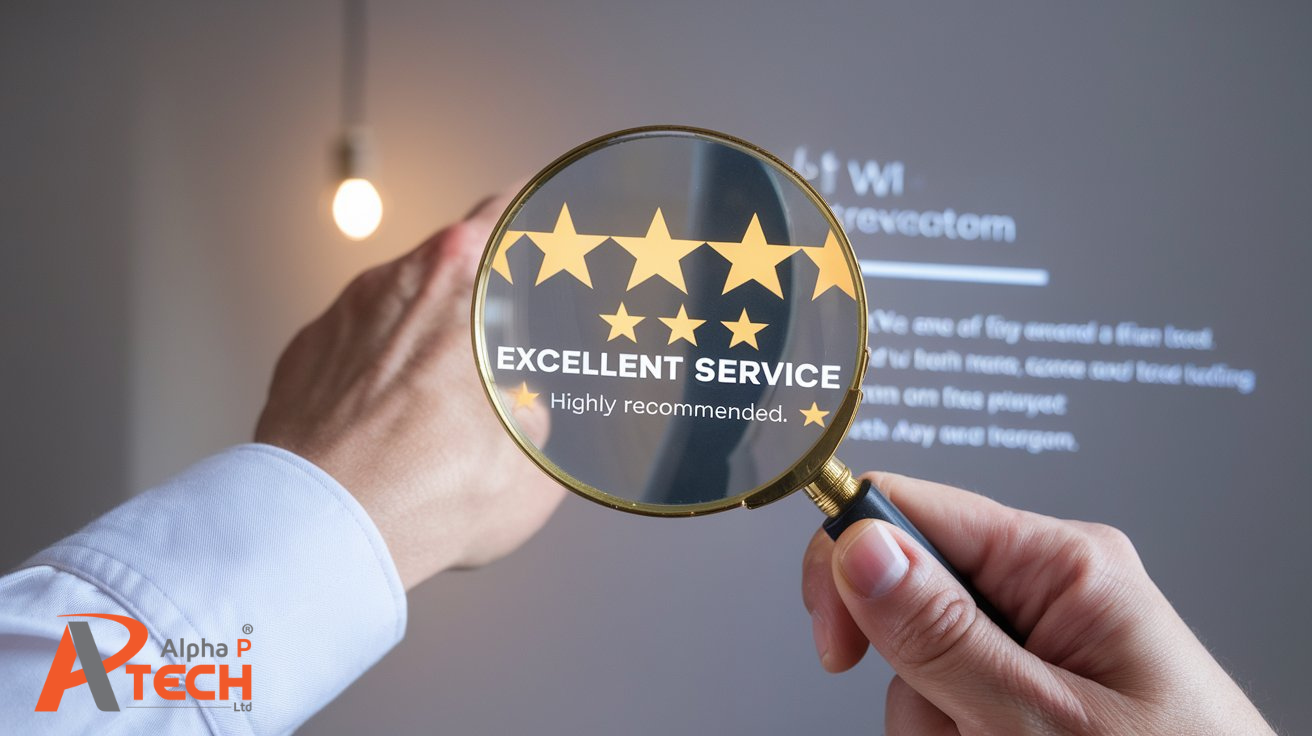The Reputation Gap
Ask any B2B founder what sets their firm apart, and nine times out of ten they’ll say: our reputation. In high-trust, high-ticket industries, it’s seen as the crown jewel — the reason clients sign on the dotted line, renew contracts, and refer others.
But here’s the irony: while most B2B firms proudly talk about their reputation, very few have a strategy to actively build or market it. Instead, they rely on word-of-mouth, long-standing relationships, and the occasional testimonial — all helpful, but hardly scalable. Reputation is often treated like a static asset when it should be a dynamic engine for growth.
In this article, we’ll explore what reputation marketing really involves, why so many firms fail to prioritise it, and how to turn it into a strategic pillar alongside your other B2B marketing strategies. Because when done well, reputation marketing isn’t just about trust — it’s about attracting enterprise clients and positioning your firm as a voice of thought leadership.
What’s the difference between reputation marketing and reputation management?
Reputation marketing and reputation management may sound similar, but they serve very different purposes.
Reputation management is reactive — it focuses on monitoring, responding to, and repairing your firm’s public image, especially when facing negative reviews or PR issues.
Reputation marketing, on the other hand, is proactive. It’s about strategically showcasing the positive: client success stories, reviews, media mentions, and thought leadership that reinforce your credibility.
While management protects your image, marketing promotes it — helping B2B firms turn trust into visibility, and visibility into growth. For those serious about attracting enterprise clients, reputation marketing should be a core part of their B2B marketing strategies — not an afterthought.
What is Reputation Marketing — And How Is It Different From Branding or PR?
Reputation marketing is the strategic act of turning your firm’s credibility into a tangible growth asset. It goes beyond managing perception — it’s about proactively amplifying the trust you’ve already earned, through the voices of clients, partners, and the results you deliver.
Unlike branding, which defines who you are, or PR, which focuses on visibility and relationships with the media, reputation marketing is rooted in proof — social validation that supports your positioning. This isn’t to say PR isn’t useful; in fact, PR can be part of a reputation marketing strategy, but it’s only one part.
It’s not just testimonials on a website or the occasional client quote. It’s a consistent effort to ensure what people say about your firm, how they discover you, and the content you share all reinforce the same message of excellence.
For professional service firms looking to build authority and attract enterprise clients, this consistency is vital. Whether it’s thought leadership content, review campaigns, or case studies, reputation marketing should sit at the heart of your B2B marketing strategy — not as a bolt-on, but as a core growth lever.
Why Reputation Alone Isn’t a Strategy (and How That Hurts Sales)
Many B2B firms pride themselves on their reputation — and rightly so. But relying on referrals, word-of-mouth, or a portfolio of past work as your only proof of credibility is no longer enough. In today’s competitive landscape, this passive approach often leads to missed opportunities, an inconsistent pipeline, and diminished authority — especially when buyers are vetting multiple providers online before ever reaching out. Without a clear framework for how that reputation is positioned, distributed, and reinforced, even the most impressive track record can go unnoticed.
The reality is that reputation without visibility rarely translates into revenue. For B2B marketing strategies to drive real growth, they need to treat reputation as more than just a legacy. It needs to be systematised. This means identifying the stories, results, and client outcomes that build trust, then amplifying them through thought leadership, strategic content, and digital channels. When structured effectively, reputation becomes more than a background asset, it becomes a tool for sales enablement, helping decision-makers say “yes” faster and with more confidence. For firms focused on attracting enterprise clients, this shift from passive to proactive is non-negotiable.
Core Pillars of Strategic Reputation Marketing
To turn reputation into a strategic growth driver, B2B firms need more than goodwill — they need structure. A well-executed reputation marketing approach rests on a few core pillars that together reinforce trust, visibility, and authority at every stage of the buyer journey.
Here’s what that looks like in practice:
1. Storytelling & Authority Content
Sharing in-depth client success stories, personal perspectives, and strategic insights through blog posts, interviews, and long-form LinkedIn content is a powerful way to demonstrate value. This type of thought leadership not only builds credibility but positions your firm as a trusted expert — a crucial edge when attracting enterprise clients. Check out our article Storytelling in B2B: How to Engage and Convert Enterprise Clients for a guide on implementing storytelling.
2. Third-Party Proof
Social proof adds weight to your claims. Reviews, testimonials, case studies, strategic partnerships, and awards all contribute to your firm’s trust signals. But they need to be more than scattered — they should be organised, surfaced, and reused across your marketing touchpoints.
3. SEO & Discoverability
No matter how strong your reputation is offline, it must show up online. That means investing in B2B content marketing that ensures your success stories and expertise are visible in search results when prospective clients Google your firm.
4. Consistency Across Channels
Reputation should feel cohesive across every channel — from sales decks and your website to your team’s LinkedIn profiles. This alignment builds familiarity and reinforces your positioning at every touchpoint.
5. Client Activation
Involving your clients in the process can elevate your efforts. Whether it’s co-creating case studies, launching review campaigns, or sharing behind-the-scenes success via co-marketing, it turns clients into advocates — a hallmark of customer-centric marketing.
Each of these pillars supports a smarter, more scalable approach to B2B marketing strategies built on trust.
What Stops Most Firms From Doing It Well?
Despite its value, B2B reputation marketing remains one of the most underutilised tactics in professional services. Why? For many firms, the challenge isn’t intention — it’s execution. There’s often a lack of ownership between sales, marketing, and leadership over who’s responsible for building and amplifying the firm’s reputation. Without a clear content system or visibility strategy, efforts tend to be ad hoc at best.
Then there’s the fear of looking self-promotional. Many professionals worry that highlighting success stories or client outcomes could come across as boastful. But reputation marketing isn’t about bragging — it’s about building trust at scale. Sharing value-driven content, celebrating impact, and showcasing thought leadership are all ways to earn credibility rather than demand attention.
Add to that an over-reliance on word-of-mouth, and it becomes clear why many firms struggle to attract attention in a crowded market. To be effective, B2B marketing strategies must evolve from passive reputation management to a proactive, intentional model that supports visibility, authority, and ultimately, attracting enterprise clients.
A Simple Way to Start Reputation Marketing
For B2B firms looking to build credibility without overhauling their entire marketing strategy, reputation marketing doesn’t need to be complex — it just needs to be consistent. Here’s a simple, scalable starting point that works even without a large team:
1. Audit Your Current Reputation Footprint
Begin by Googling your business. What do prospects see first? Does it reflect your expertise, values, and results? This forms the foundation of your reputation management strategy and helps identify quick wins and glaring gaps.
2. Curate and Repurpose What You Already Have
Chances are, you’re already sitting on gold — client feedback, case studies, positive emails, or social proof. Repurpose these into short-form posts, quotes, or testimonials that reinforce your positioning and support client acquisition efforts.
3. Build a Simple Reputation Calendar
Develop a monthly rhythm for sharing proof and thought leadership — whether it’s a LinkedIn post, a client success spotlight, or a podcast appearance. These small, steady actions form a scalable foundation for effective B2B marketing.
Reputation marketing isn’t about doing more — it’s about doing the right things, consistently, and making them work harder for your brand.
Final Thoughts: Reputation Deserves a Seat at the Strategy Table
Reputation isn’t just something you earn over time — it’s something you can actively market to drive visibility, trust, and growth. For B2B firms looking to build long-term credibility and attract enterprise clients, reputation must move from the sidelines into the heart of your marketing strategy. It’s not about shouting the loudest, but about showing up consistently with proof, thought leadership, and intent.
So here’s the challenge: If your firm’s reputation is your biggest asset, what are you doing today to grow its value?
Want help designing a tailored reputation marketing plan that actually builds pipeline? Let’s talk.



